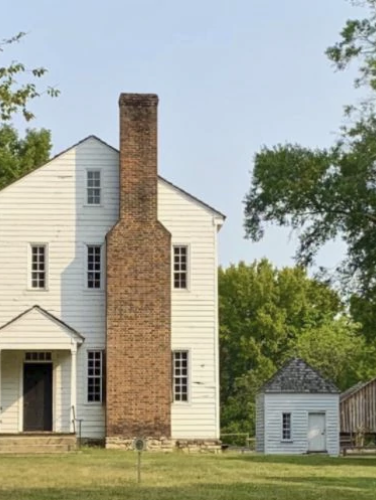
Latta Place
(ca. 1800)
Initially a traveling salesman, Irish immigrant James Latta built his Latta Place home and property into one of Mecklenburg County’s largest antebellum plantations.
5225 Sample Road, Huntersville, NC 28078
James Latta (1755-1837) immigrated to the United States from Ireland in 1785. A widower with two sons, James saw great business potential in this new nation and became a merchant. He would travel to Philadelphia and Charleston to buy his wares, then sell them from the back of his Conestoga wagon to farmers and villagers across York, Mecklenburg, Lincoln, and Rowan counties. He eventually built a store in Yorkville, South Carolina, that his son Robert (1783-1852) later acquired and successfully operated for many years. At the time of his death, Robert was reportedly the wealthiest man in South Carolina.
Property Quick Links
At the time of Latta Place’s construction, James owned two enslaved persons, possibly a house servant and an assistant for his mercantile business. As the life of an itinerant salesman became more difficult with his advanced age, James’ entrepreneurial spirit prompted him to focus on agriculture, specifically cotton farming. James began to acquire several more enslaved persons to farm the estate until, in 1825, he felt it necessary to hire an overseer to manage his enslaved workforce. At the time of his 1837 death, James owned at least twenty-five enslaved persons, some of whom were inherited by his family while others were sold.
Following her husband’s death, Jane went to live with her daughter and son-in-law at the nearby Mount Mourne estate. Latta Place had been deeded to Benjamin W. Wilson and Robert Latta many years earlier in 1819 with the provision that James and Jane would continue living there, as a means to provide for their son Ezekiel. However, because ten-year-old Ezekiel predeceased his father, the Latta family property went up for public sale soon after James’ death. In 1841 David Harry purchased two tracts of the estate for $2,450. Those tracts were sold in 1853 to William A. Sample, a longtime elder in Huntersville’s Hopewell Presbyterian Church. Sample’s son Hugh inherited the Latta Place house and a portion of the surrounding land from his father in 1877. The house remained in the Sample family until 1922 when it was deeded to the Catawba Manufacturing Company, a wholly owned subsidiary of Southern Power Company. Following the 1927 merger of Southern Power with Duke Power Company, the Latta Place house and property were deeded to Crescent Land and Timber Corporation, much of which was leased to the United States government until the mid-1970s.
The house is an interesting early Federal house with a plan unique for North Carolina in the early 1800s. The elegant stairs with elements of Georgian design, elaborate mantels, and consistent use of skillfully executed early Federal motifs throughout the house make the Latta Place house one of the very best homes of its type in the upper Piedmont for that period of time.

